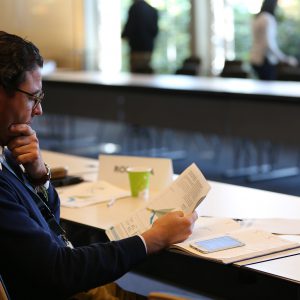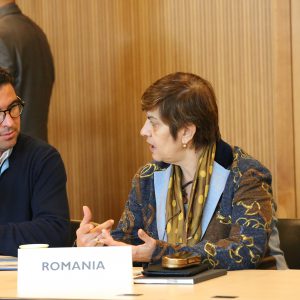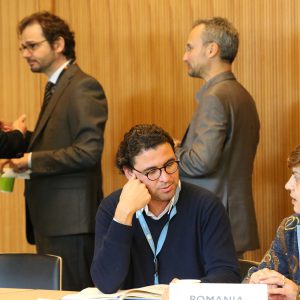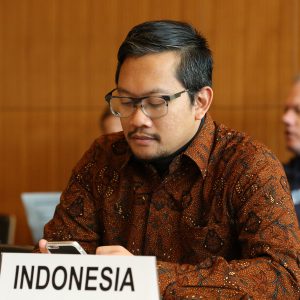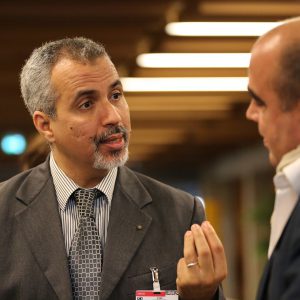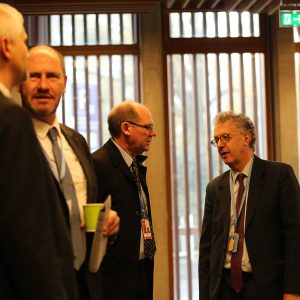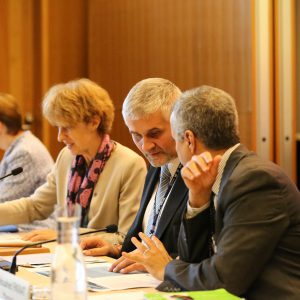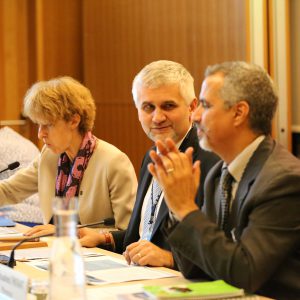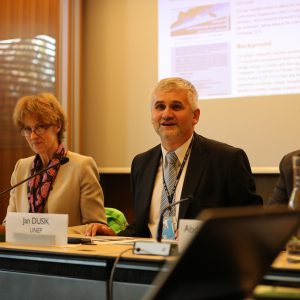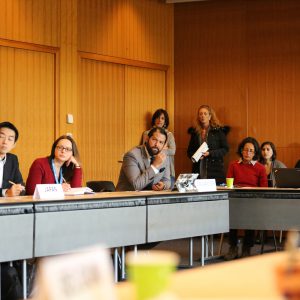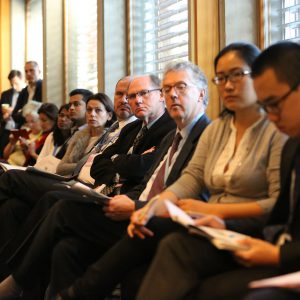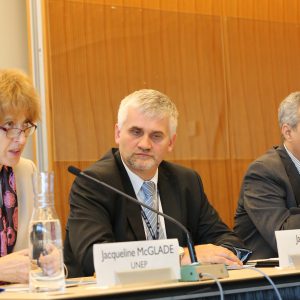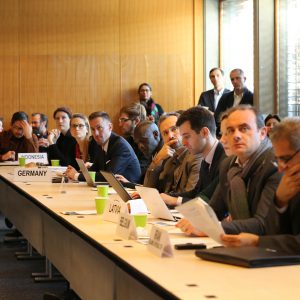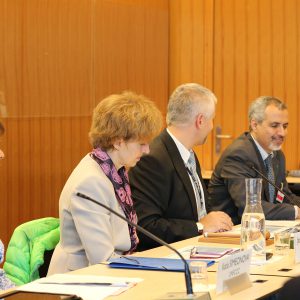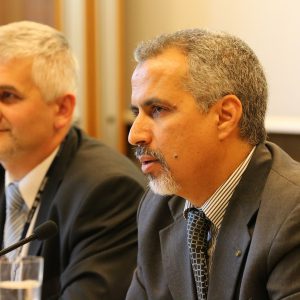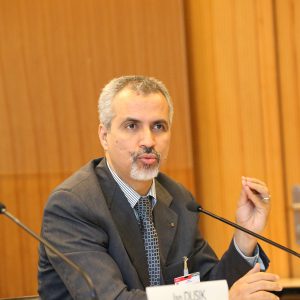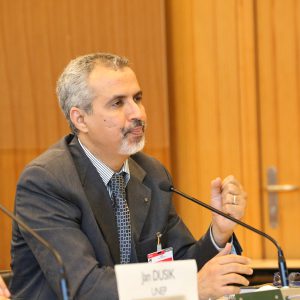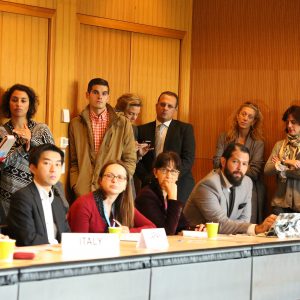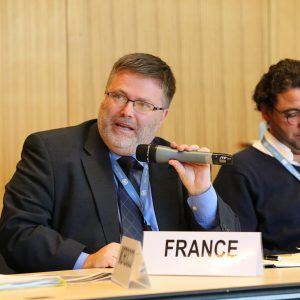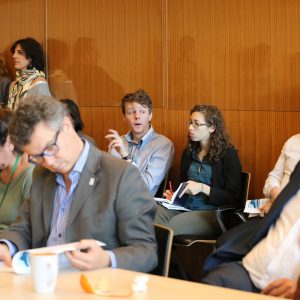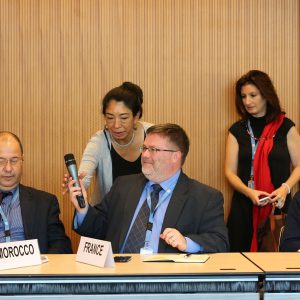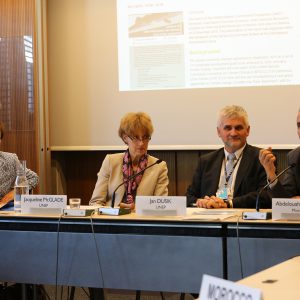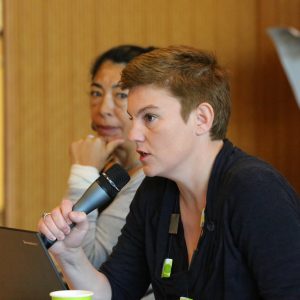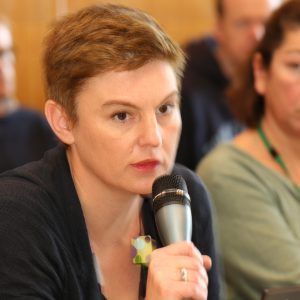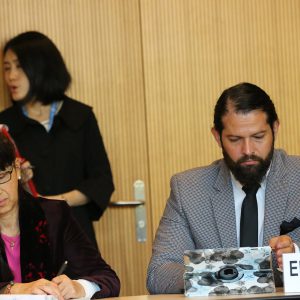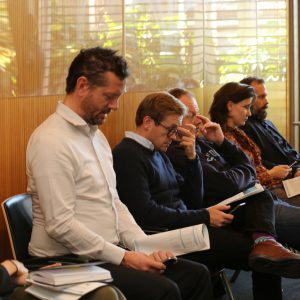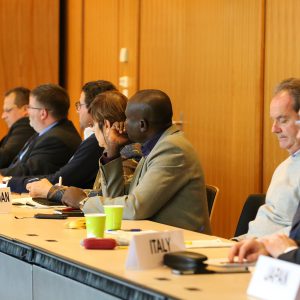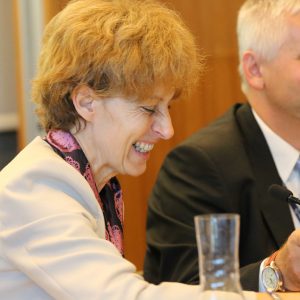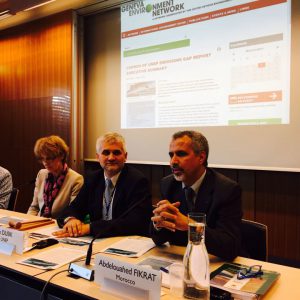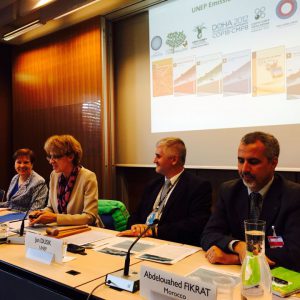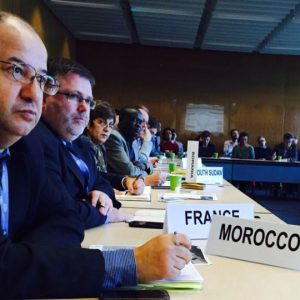Event
Launch of UNEP Emissions Gap Report Executive Summary
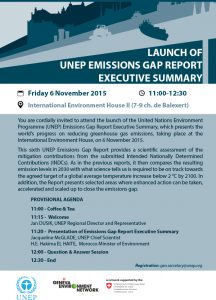
The launch of the United Nations Environment Programme (UNEP) Emissions Gap Report Executive Summary, which presents the world’s progress on reducing greenhouse gas emissions, took place in Geneva, on 6 November 2015. The presentation of the report was organized within the framework of the Geneva Environment Netwok at the International Environment House
Background
The global community reached agreement in September 2015 on a set of 17 sustainable development goals to be achieved by 2030, including climate change. Countries will meet again at the United Nations Framework Convention on Climate Change (UNFCCC) 21st Conference of the Parties (COP 21) in Paris with the aim of establishing a new global agreement on climate change, hereafter the ‘Paris Agreement’, with the ambition of limiting changes in global temperatures to below 2 °C or 1.5 °C warming in 2100 compared to pre-industrial levels. The Paris Agreement will also aim to establish a framework to provide technological and financial support for developing countries to accelerate the transition towards low carbon and climate resilient development paths.
This sixth UNEP Emissions Gap Report provides a scienti c assessment of the mitigation contributions from the submitted Intended Nationally Determined Contributions (INDCs). As in the previous reports, it then compares the resulting emission levels in 2030 with what science tells us is required to be on track towards the agreed target of a global average temperature increase below 2 °C by 2100.
In addition, the Report presents selected areas where enhanced action can be taken, accelerated and scaled up to close the emissions gap.
Agenda
11:00
Co ffee & Tea
11:15
Welcome
Jan DUSIK, UNEP Regional Director and Representative
11:20
Presentation of Emissions Gap Report Executive Summary
Jacqueline McGLADE, UNEP Chief Scientist (download presentation)
Abdelouahed FIKRAT, Morocco Ministry of Environment Secretary-General
Katia SIMEONOVA, UNFCCC
12:00
Question & Answer Session
12:30
End
Summary
Jacqueline McGlade, UNEP’s Chief Scientist, explained that this year UNEP has undergone analysis of the Intended National Determined Contributions (INDCs) submitted by countries to answer the question what the impact of the INDCs will be on global emissions. Additionally, UNEP has compared the expected outcomes of the INDCs to the 2°C or 1.5°C by 2100 targets to determine the emissions gap that exists and has identified actions that may be taken to fill that gap.
Early action is important
While the UNFCCC process will be in a “pledging environment” until 2020, early action remains important. Business as usual estimates saw emissions rising steadily and reaching 65Gt by 2030 but taking into account the early Cancun pledges made, this number has plateaued in 2014 to approximately 52.7Gt and would reach 60Gt by 2030.
So early action will, in fact, have an effect and it prevents technology lock in and escalating costs of abatement. In other words, the sooner we act the cheaper it is and the less locked in we are.
Net zero required by 2060-2075
The Intergovernmental Panel on Climate Change concluded that a cumulative maximum carbon budget of 1000Gt is required to keep warming below 2C. With current trends this means that globally, we will need to strive to reduce emissions to net zero by 2060-2075.
42 Gt by 2030 is the magic number
The median emission level in 2030 scenarios that has a >66% chance of keeping temperature increase to below 2 °C by the end of the century is 42 Gt.
The emissions gap varies depending on INDC conditions
The INDCs are country-determined pledges and include different kinds of targets and conditions. Two distinct kinds of pledges exist – conditional and unconditional. Unconditional targets are what countries can achieve at current conditions and conditional targets require additional support, financing, etc. to meet. The emissions gap report projects the following levels by 2030:
• Baseline – 65Gt
• Current policies (i.e. Cancun pledges) – 60Gt
• Unconditional INDC pledges – 56Gt
• Conditional INDC pledges – 54Gt
With 42Gt being the magic number this means a 14Gt (unconditional) to 12Gt (conditional) gap. If full implementation of conditional INDCs were achieved an average estimated temperature increase of <3-3.5C by 2100 would occur (66% likelihood).
There are actions that can close these gaps
Assessment of recent studies done by UNEP point to a several actions that can be taken to try to close the gap.
• Enhanced energy efficiency
• Expanded use of renewable energy technologies
• Agriculture and forestry related initiatives also have potential up to 9Gt but are likely to be constrained by economic and land use factors
In addition, UNEP highlighted the potential of International Cooperative Initiatives (ICIs) such as cities, cooperatives, private sector initiatives which are not accounted for in the INDCs as a potential area of action that could close the gap up to 2.5-4Gt by 2020.
INDC’s impact is not fully measured by numbers
While the INDCs do leave an emissions gap, the process and way of thinking that they started has an impact all its own. The INDCs are country endorsed plans which meant that they involved social and political processes within countries that increased engagement in the global climate process. They have already led to real policies and actions being galvanized which is a positive sign.
Additionally, the process has raised the importance of the links between climate and Sustainable Development Goals (SDGs). The SDGs enhanced cooperation on UN agency mandates and have been a common goal for countries to rally behind.
Abdelouahed FIKRAT, Morocco Ministry of Environment Secretary-General, added some elements on the preparation of COP22, which his country will host in 2016, and the efforts made by his country. He stressed that the right to development is no the right to pollute.
The good work between Peru (COP20), France (COP21) and Morocco (COP22) was highlighted in the discussion.
More information and documents
Visit UNEP Live portal to download the report summary available in various languages.
Reed also UNEP Press release.
https://www.genevaenvironmentnetwork.org/wp-content/uploads/2020/05/egr_presentation_6nov15.pdf


